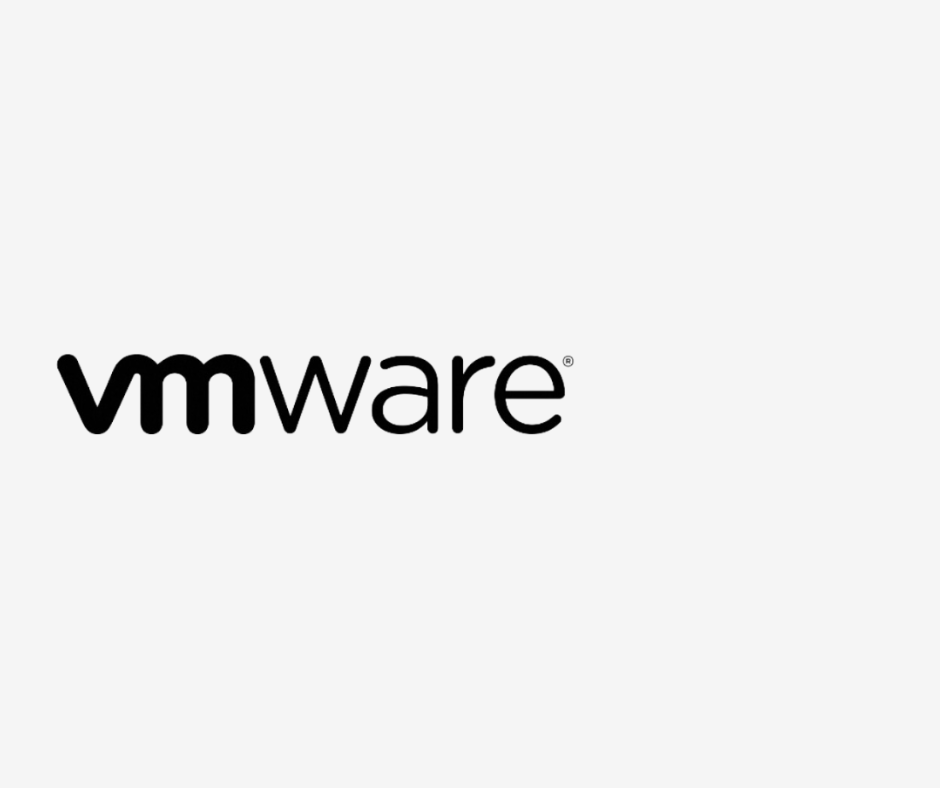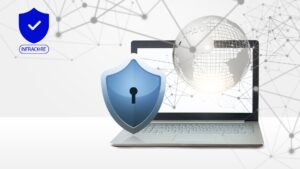- teamITsupport
How a Cybersecurity Compliance Audit Can Protect Your Business from Threats
In today’s digital world, businesses of all sizes are exposed to various cyber threats. From data breaches to ransomware attacks, the frequency and sophistication of these dangers continue to escalate. A cybersecurity compliance audit is a critical line of defense, ensuring companies comply with legal and industry-specific regulations and protect their data and systems from evolving threats.
This type of audit doesn’t just tick boxes. It strategically evaluates an organization’s security posture, assessing vulnerabilities, potential risks, and areas of non-compliance. Failing to adhere to cyber security audit and compliance standards for companies that handle sensitive data can result in catastrophic consequences, including financial loss, legal penalties, and reputational damage. To understand how this audit protects a business, it’s essential to break down the mechanisms and strategies involved.

The Role of a Cybersecurity Compliance Audit
A cybersecurity compliance audit systematically evaluates an organization’s information security systems and procedures. It verifies adherence to security standards and regulations, such as the Sarbanes-Oxley ACT (SOX), the Health Insurance Portability and Accountability Act (HIPAA), and others depending on the industry and location.
The audit provides a deep dive into various facets of your IT environment, including:
- Network Security: Evaluating firewalls, intrusion detection systems (IDS), and encryption methods.
- Data Protection: Ensuring personal and sensitive information is adequately protected.
- Access Controls: Reviewing user privileges, authentication methods, and role-based access controls.
- Incident Response Plans: Assessing the readiness and effectiveness of your incident response strategy.
A cybersecurity compliance audit addresses these critical areas and ensures that an organization’s defenses are aligned with regulatory standards and robust enough to mitigate real-world threats.
What is a cybersecurity compliance audit?
A cybersecurity compliance audit is a review that checks if an organization’s cybersecurity practices meet required regulations, such as HIPAA or GDPR. It covers risk management, data protection, and employee training to ensure sensitive data is secure and the organization is prepared for cyber threats.

Why is a Cybersecurity Compliance Audit Essential?
- Mitigating Financial Risks: The cost of a data breach is monumental. According to a recent report by IBM, the average price of a data breach in 2024 is $4.88M (and it could be much higher, depending on the size of the business and the severity of the attack). A cybersecurity compliance audit reduces this risk by identifying vulnerabilities attackers could exploit.
- Legal and Regulatory Compliance: Non-compliance with industry regulations can result in severe penalties, lawsuits, and operational disruptions. Regulatory bodies demand businesses safeguard customer and partner information. An audit ensures compliance with these regulations, protecting the organization from fines and legal issues.
- Safeguarding Reputation: A business’s reputation is one of its most valuable assets. A single breach can irreparably damage trust with customers and partners. An audit strengthens your defenses and is a powerful tool in demonstrating your commitment to security. Proactively conducting a cyber security audit and compliance check strongly signals that your organization takes data protection seriously.
- Prevention over Cure: A proactive cybersecurity compliance audit, prevents attacks before they happen. While some organizations focus on reactive measures, auditing helps identify and address weak spots before they are exploited. This preventive approach can save both time and resources.
- Ensuring Data Integrity and Availability: Data integrity and availability are crucial for business continuity in a cyberattack. The audit ensures that backup processes, encryption methods, and recovery strategies are in place and functional. This guarantees that your data remains uncompromised even in the face of an attack and that your operations can recover swiftly.
What is the difference between IT audit and cybersecurity audit?
An IT audit evaluates an organization’s overall IT systems for efficiency, reliability, and compliance with general controls, while a cybersecurity audit specifically assesses security measures protecting data from cyber threats. IT audits are broader, whereas cybersecurity audits focus solely on security protocols and compliance with security standards.

Critical Components of a Cybersecurity Compliance Audit
A comprehensive cybersecurity compliance audit consists of multiple stages, each serving a unique purpose in fortifying a business’s security framework. Let’s explore these components in detail.
1-Risk Assessment
Every audit begins with a risk assessment. This stage identifies all the potential risks to the organization’s data and systems, categorizing them based on severity and likelihood of occurrence. Risk assessment illuminates weak points in your cybersecurity infrastructure, from outdated software to inadequate access controls.
2-Gap Analysis
Gap analysis compares your current security posture with the requirements of the applicable security standards (e.g., ISO/IEC 27001). It identifies areas where your organization may need more compliance, giving you a roadmap for remediation.
3-Penetration Testing
Penetration testing (or ethical hacking) simulates real-world attacks to evaluate how well your systems would withstand cyber threats. This hands-on evaluation is crucial for understanding the practical effectiveness of your security controls and configurations.
4-Policy Review
A cybersecurity compliance audit also involves scrutinizing the organization’s security policies. These policies should govern all aspects of data handling, from access controls to incident management. Reviewing them ensures that your guidelines are current with industry regulations and emerging threats.
5-Incident Response Evaluation
A rapid, effective response is critical in the event of a breach. An audit will review your organization’s incident response plan, ensuring it is well-documented, regularly tested, and effectively mitigated damages during a cyberattack.
6-Training and Awareness Programs
Cybersecurity is not solely the responsibility of the IT department every employee plays a role in maintaining security. A thorough audit evaluates the effectiveness of training programs, ensuring that all staff members understand how to recognize and prevent cyber threats.
What are the three main phases of a cybersecurity audit?
The three main phases of a cybersecurity audit are Planning (defining scope and objectives), Assessment (evaluating security controls and vulnerabilities), and Reporting (documenting findings and recommending improvements). These steps ensure a thorough review and strengthen cybersecurity measures.

How the Audit Aligns with Cyber Security Audit and Compliance Frameworks
A cybersecurity compliance audit often maps its findings to established frameworks such as:
- NIST Cybersecurity Framework (CSF): The National Institute of Standards and Technology’s framework focuses on risk management and resilience.
- ISO/IEC 27001: This globally recognized standard ensures that organizations have a comprehensive Information Security Management System (ISMS).
- PCI-DSS: Businesses handling payment card data must comply with the Payment Card Industry Data Security Standard to ensure the security of customer financial information.
- CIS (Center for Internet Security): Provides several frameworks and benchmarks to help organizations secure their systems and comply with best practices. Some of the most common frameworks include the CIS Controls and the CIS Benchmarks.
By aligning with these frameworks, businesses protect their data and meet the requirements to operate in highly regulated environments.
Strengthening Organizational Security through Regular Audits
Cybersecurity is not static threats evolving; technologies change, and new vulnerabilities emerge. A cybersecurity compliance audit is most effective when conducted regularly. This enables organizations to stay ahead of the latest threats, adapt to changing regulations, and continuously improve their security postures.
Continuous Monitoring
Post-audit, continuous monitoring ensures that vulnerabilities identified during the audit are addressed and that the security measures remain effective over time. Businesses need to integrate continuous monitoring practices into their broader cybersecurity strategy, helping to detect anomalies in real time and prevent breaches before they cause damage.
Vendor and Third-Party Compliance
An often overlooked aspect of cyber security audit and compliance is third-party risk management. Many breaches occur because of vulnerabilities in the supply chain or external partners. A robust audit will evaluate the internal infrastructure and the cybersecurity policies and practices of vendors and third-party service providers. This helps identify potential external risks and enforce compliance across the business ecosystem.

How to Prepare for a Cybersecurity Compliance Audit
Adequate preparation can significantly streamline the audit process. Here are some critical steps to ensure a smooth and efficient audit:
1-Understand the Requirements
Identify the regulations and standards that apply to your organization. Understanding the legal and compliance requirements is crucial, whether it’s SOX, HIPAA, or another set of rules.
2-Conduct an Internal Audit
Conduct an internal review of your cybersecurity practices before engaging an external auditor. This will allow you to identify and remediate any gaps before the official audit begins.
3-Document Everything
Proper documentation is critical to a successful audit. Ensure that all policies, procedures, security configurations, and compliance measures are clearly documented and easily accessible to the auditors.
4-Assign Roles and Responsibilities
Define who in your organization will be responsible for interacting with the audit team. Ensure that key personnel are available to provide insights into your security infrastructure and answer any questions.
Protect Your Business with Infracore’s Expert IT Services
At Infracore, we recognize the critical importance of cybersecurity and compliance in today’s business environment. With over two decades of experience providing top-notch IT services, we offer comprehensive cybersecurity compliance audits and customized IT services to protect your business from potential threats.
Our team of experts will evaluate your security posture, ensure compliance with industry regulations, and implement advanced strategies to safeguard your data, systems, and reputation.
By partnering with Infracore, you can focus on growing your business while we manage the complexities of cybersecurity audits and compliance. Don’t wait until a breach occurs. Contact us today to schedule a consultation and take the first step toward securing your business’s future.
Final Thoughts on the Importance of a Cybersecurity Compliance Audit
The value of a cybersecurity compliance audit extends far beyond regulatory adherence. It strengthens an organization’s security framework, ensuring businesses are well-equipped to defend against internal and external threats. By continuously aligning your security posture with industry standards through regular audits, you not only avoid costly penalties but also gain a competitive advantage by fostering trust among customers and partners.
Investing in a comprehensive cyber security audit and compliance process is a proactive measure that can significantly reduce risk, protect critical assets, and ensure the longevity and resilience of your business in an increasingly volatile digital landscape.
Cybersecurity Compliance Audit FAQ
Typical standards include HIPAA, PCI-DSS, GDPR, and NIST frameworks, all of which set guidelines for data protection, access control, and incident response to prevent unauthorized data access.
Many organizations conduct audits annually, but the frequency can depend on the industry, regulatory requirements, and risk level, with some requiring more frequent audits to stay compliant.
Key areas include risk management policies, access controls, data protection mechanisms, employee training on security protocols, and the organization’s incident response plan.
Preparation involves conducting internal assessments, ensuring up-to-date security policies, training employees on best practices, and organizing documentation for easy auditor access.
These audits identify security gaps, improve regulatory compliance, and strengthen data protection practices, significantly reducing the risk of breaches and enhancing overall cybersecurity resilience.

















